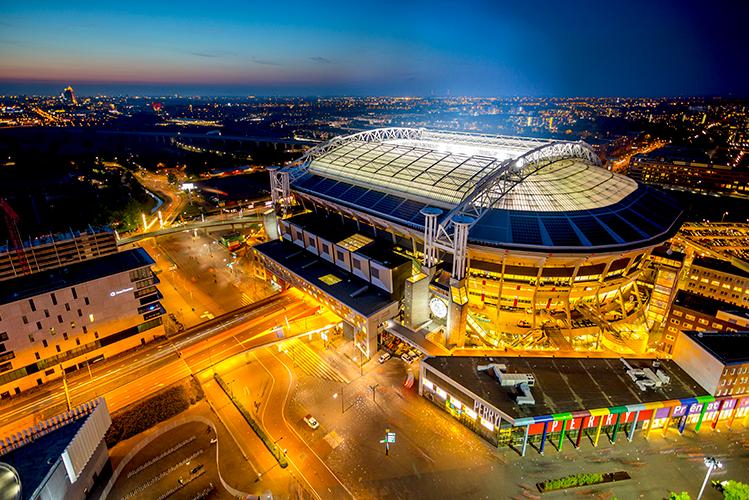
Europe’s largest energy storage system with electric vehicle batteries now live
The largest European energy storage system using second-life and new electric vehicle batteries in a commercial building was made live in Amsterdam at the Johan Cruijff ArenA, home ground of the famous Ajax football club.
This unique project is the result of collaboration between Nissan, Eaton, BAM, The Mobility House and the Johan Cruijff ArenA, supported by the Amsterdam Climate and Energy Fund (AKEF) and Interreg.
The 3 MW storage system provides a more reliable and efficient energy supply and usage for the stadium, its visitors, neighbours and the Dutch energy grid.
Combining Eaton power conversion units and the equivalent of 148 Nissan LEAF batteries, the energy storage system not only enables a more sustainable energy system, it also creates a circular economy for electric vehicle batteries.
“Thanks to this energy storage system, the stadium will be able to use its own sustainable energy more intelligently and, as Amsterdam Energy ArenA BV, it can trade in the batteries’ available storage capacity.” says Henk van Raan, director of innovation at the Johan Cruijff ArenA.
“The ArenA is assured of a considerable amount of power, even during an outage. As a result, the stadium will contribute to a stable Dutch energy grid.”
Francisco Carranza, Managing Director of Nissan Energy said: “Thanks to the Johan Cruijff Arena, we can demonstrate today that re-purposing the batteries of Nissan electric vehicles can contribute to make the whole energy system more efficient and sustainable.”
The energy storage system plays an important role in balancing supply and demand of energy in the arena. The storage system with 3 MW and 2.8 – MW/hour is enough to power several thousand households. This capacity also means that the energy produced by the 4,200 solar panels on the roof of the arena can also be stored and used optimally.
The energy storage system will provide back-up power, reducing the use of diesel generators, and provide relief to the energy grid by flattening the peaks that occur during concerts.
